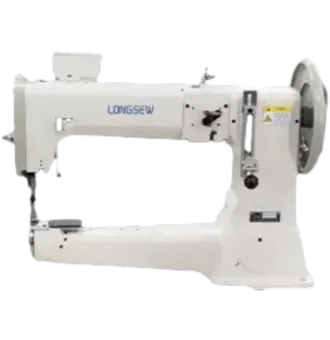Exploring the Functions of Overlock and Coverstitch Sewing Machines for Seam Finishing
Understanding Overlock and Coverstitch Machines Essential Tools for Seamstresses
In the world of sewing, overlock and coverstitch machines play a pivotal role, especially for those looking to elevate their sewing projects. While both types of machines serve distinct purposes, they are often grouped together due to their ability to create professional-quality finishes on garments. Let’s delve into the functionalities, differences, and benefits of these essential sewing tools.
What is an Overlock Machine?
An overlock machine, also known as a serger, is designed to sew, trim, and finish the edges of fabric in one seamless operation. By utilizing multiple threads (commonly three or four), it creates a tighter, more durable stitch than regular sewing machines. The primary purpose of an overlock machine is to prevent fabric edges from fraying, making it an indispensable tool for knit and stretchy fabrics, as well as for woven materials.
Overlock machines operate quite differently from traditional sewing machines. They employ a blade that cuts the fabric while sewing, ensuring a clean edge. This not only saves time but also helps achieve a professional appearance. Most overlock machines allow for adjustments in stitch type, tension, and speed, giving users the flexibility to work with various fabric types and thicknesses.
The Role of Coverstitch Machines
While overlock machines excel in edge finishing, coverstitch machines are specialized for hem and finishing seams on knit fabrics. They feature a unique stitching process that creates a flat, flexible seam, which is particularly beneficial in activewear, t-shirts, and other stretchy garments. Coverstitch machines typically utilize two needles and a looper to create two or three rows of stitching on the top side while employing a chain stitch underneath, providing excellent stretch without compromising the fabric's integrity.
A significant advantage of using a coverstitch machine is its ability to make hems that lay flat and are less prone to puckering compared to traditional methods. This is particularly important for minimalist styles where the garment's clean lines are paramount.
Key Differences Between Overlock and Coverstitch Machines
overlock and coverstitch machine

While both machines contribute to achieving neat finishes in sewing projects, there are key differences in their operations and intended uses
1. Stitch Types Overlock machines primarily use overlock stitches, which are ideal for seams and fabric edges, while coverstitch machines focus on flatlock and chain stitches meant for hems and decorative finishes.
2. Versatility Overlock machines are versatile and can be used for a variety of tasks, such as sewing seams, cutting edges, and creating decorative finishes. In contrast, coverstitch machines are specialized, primarily designed for hems and finishes on knit fabrics.
3. Complexity Overlock machines may require a bit more learning in terms of threading and setting up due to their multiple thread pathways and options. Coverstitch machines, while also complex, typically have a simpler threading process but limit users to specific stitches.
Benefits of Owning Both Machines
For avid sewists and professional garment makers, owning both an overlock and a coverstitch machine can significantly enhance the quality of their work. The combination allows for a streamlined sewing process — while the overlock machine finishes edges, the coverstitch machine can quickly hem garments, saving time and improving results.
Moreover, investing in these specialized machines allows sewists to experiment with various styles and techniques, ultimately expanding their creative capabilities. As the fashion industry continues to embrace knitwear and active apparel, having the right tools at hand has never been more crucial.
Conclusion
In summary, overlock and coverstitch machines are integral for anyone looking to refine their sewing skills and produce professional-quality garments. Understanding the specific functions and strengths of each machine empowers sewists to choose the best tools for their projects and achieve stunning results. Whether you're a hobbyist or a seasoned professional, incorporating these machines into your sewing arsenal can lead to transformative outcomes in your fabric creations.
-
Boost Production Efficiency with a Pattern Sewing MachineNewsAug.29,2025
-
Industrial Excellence with the Best Heavy Duty Sewing MachineNewsAug.29,2025
-
Precision and Power with the Best Pattern Sewing MachineNewsAug.29,2025
-
Reliable Bulk Packaging Starts With the Right FIBC Sewing MachineNewsAug.29,2025
-
Advanced Packaging Solutions: Elevate Productivity with Jumbo Bag Sewing Machine and Industrial Stitching EquipmentNewsAug.29,2025
-
High-Performance Solutions for Bulk Packaging: FIBC Sewing Machine and MoreNewsAug.29,2025
-
Maximize Efficiency with an Industrial Cylinder Arm Sewing MachineNewsAug.28,2025


























